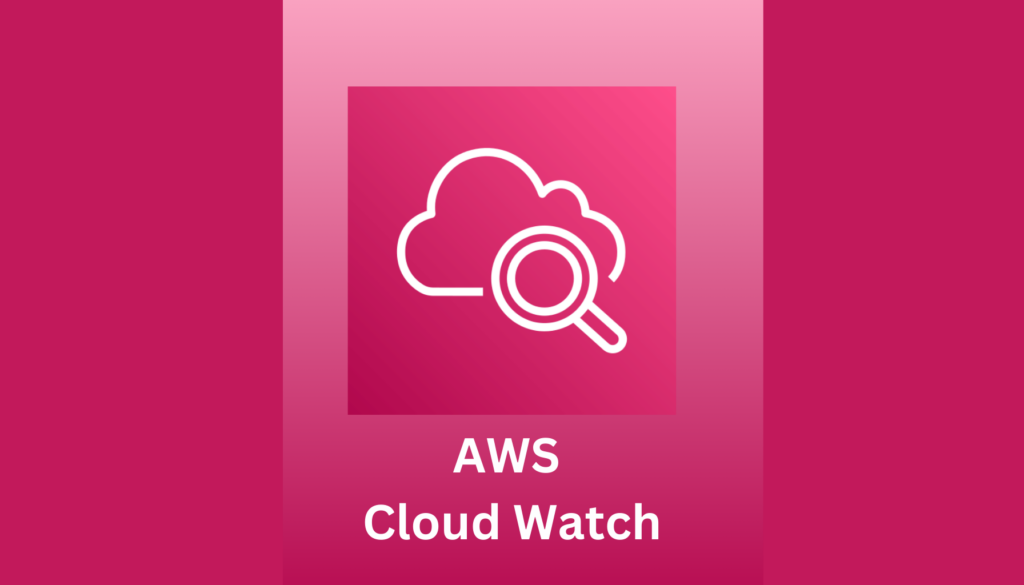What is AWS CloudWatch?

Amazon Web Service (AWS) CloudWatch is a versatile monitoring and management service designed for AWS cloud resources and the applications you run on AWS. It provides real-time insights into your AWS resources, allowing you to track metrics, collect log files, set alarms, and automatically react to changes in your AWS Environment.
CloudWatch is crucial in ensuring the optimal performance and health of your infrastructure and applications, serving as a central pillar for efficient cloud management and operations.

Source: AWS CloudWatch / AWS CloudWatch for log collection and real-time visualizations
AWS CloudWatch Core Features
AWS CloudWatch collects metrics data and logs from various AWS resources and converts these data into real-time visualizations that help monitor and take automated action according to the data. Some of the features of AWS CloudWatch include:
- Real-time Monitoring: This fundamental aspect of CloudWatch enables users to track AWS resource utilization, application performance, and operational health in real-time. By providing detailed metrics on various services such as EC2, RDS, and Lambda, CloudWatch facilitates proactive issue identification and resolution, ensuring optimal performance.
- Customizable Dashboards: One of the most user-friendly features of CloudWatch is its customizable dashboards. Users can create tailored views that display key metrics and alarms, allowing for a quick overview of system health. These dashboards can be configured to focus on specific AWS services or resources, providing a centralized view of the metrics that matter most.
- Alarms and Alerts: CloudWatch Alarms are critical for maintaining system stability and performance. Users can set up alarms to trigger notifications or automated actions based on specific metric thresholds. This feature is handy for immediate issue detection and response, helping to minimize downtime and maintain service levels.
- Log Management: CloudWatch Logs offers a robust solution for collecting, monitoring, and analyzing log data from AWS resources. This capability is crucial for troubleshooting, security analysis, and gaining insights into system behavior. Users can search and filter log data for specific patterns, set up log-based alarms, and even use CloudWatch Logs Insights for more advanced queries.
- Event Management: CloudWatch Events enable automated responses to changes in AWS resources. This feature allows for the setup of event-driven architectures, where specific events can trigger actions in other AWS services, streamlining workflow and operational processes.
- Custom Metrics: For specialized monitoring needs, CloudWatch supports the creation of custom metrics. Users can publish their metrics to CloudWatch, providing flexibility to monitor application-specific parameters or business KPIs.
Pricing Overview
AWS CloudWatch operates on a pay-as-you-use pricing model, allowing users to scale services according to their needs and budget. The main pricing is divided into two tiers. The “Free tier” and the “Paid tier”.
What does AWS CloudWatch Free Tier Offers?
In the free tier, AWS CloudWatch is an “Always free” service with certain limitations in place. Most services like EC2, S3, and others use CloudWatch automatically for free. This includes
- 10 Custom Metrics and 10 Alarms
- 1,000,000 API Requests
- 5GB of Log Data Ingestion and 5GB of Log Data Archive
- 3 Dashboards with up to 50 Metrics Each per Month
Understanding AWS CloudWatch Paid Tier
AWS CloudWatch divides its process into various elements, such as logs, metrics, dashboards, alarms, events, and more. The pricing is set for each element letting you pay precisely for the resources you use.
- Metrics: CloudWatch charges for the number of custom metrics and API requests. It provides basic monitoring metrics for free, but users are required to pay for custom metrics.
- Alarm: Piercing for the alarms is based on the type and number you create. Standard alarms are less expensive, while more complex composite alarm has a higher cost.
- Logs: Log data incurs charges for ingestion, storage, and analysis. The free tier includes 5GB of log data ingestion and storage per month. Beyond this, additional charges are required based on the volume of data.
- Events: Beyond the free tier usage users are required to pay for custom events and cross-account events.
- Dashboard: This comes with a static pricing of $3.00 per dashboard per month beyond the free tier.
There are other elements that you need to think about when using this service. Check out the AWS CloudWatch pricing page for that. The pricing also varies by the region you choose. You can easily calculate the estimated pricing you’ll need using AWS Calculator.

How to Optimization AWS CloudWatch Cost?
Effective cost optimization with AWS CloudWatch begins with a clear understanding of the specific monitoring needs and usage patterns of the users. Here are a few things to consider for CloudWatch cost optimization.
- Review and Clean Up Metrics: Regularly audit CloudWatch metrics and alarms. Remove unnecessary ones to avoid excess charges.
- Optimize Log Storage: Use log filtering to store only necessary data. Also, consider aggregating or archiving old logs to cheaper storage solutions like S3.
- Utilize Free Tier: Take full advantage of the free tier offerings for metrics, logs, and events.
- Set Up Billing Alarms: Create billing alarms to monitor CloudWatch costs and avoid unexpected charges.
- Efficient Data Transfer Management: Minimize data transfer costs by optimizing the amount of data sent to and from CloudWatch.
Conclusion
Setting up an effective cost-optimized service in AWS Cloud requires a professional understanding of the service and its pricing. That ultimately helps in implementing the best service design in both performance and cost savings.
Ready to elevate your AWS strategy?
[Reach out] for specialized guidance to ensure your setup is both cost-effective and high-performing.

